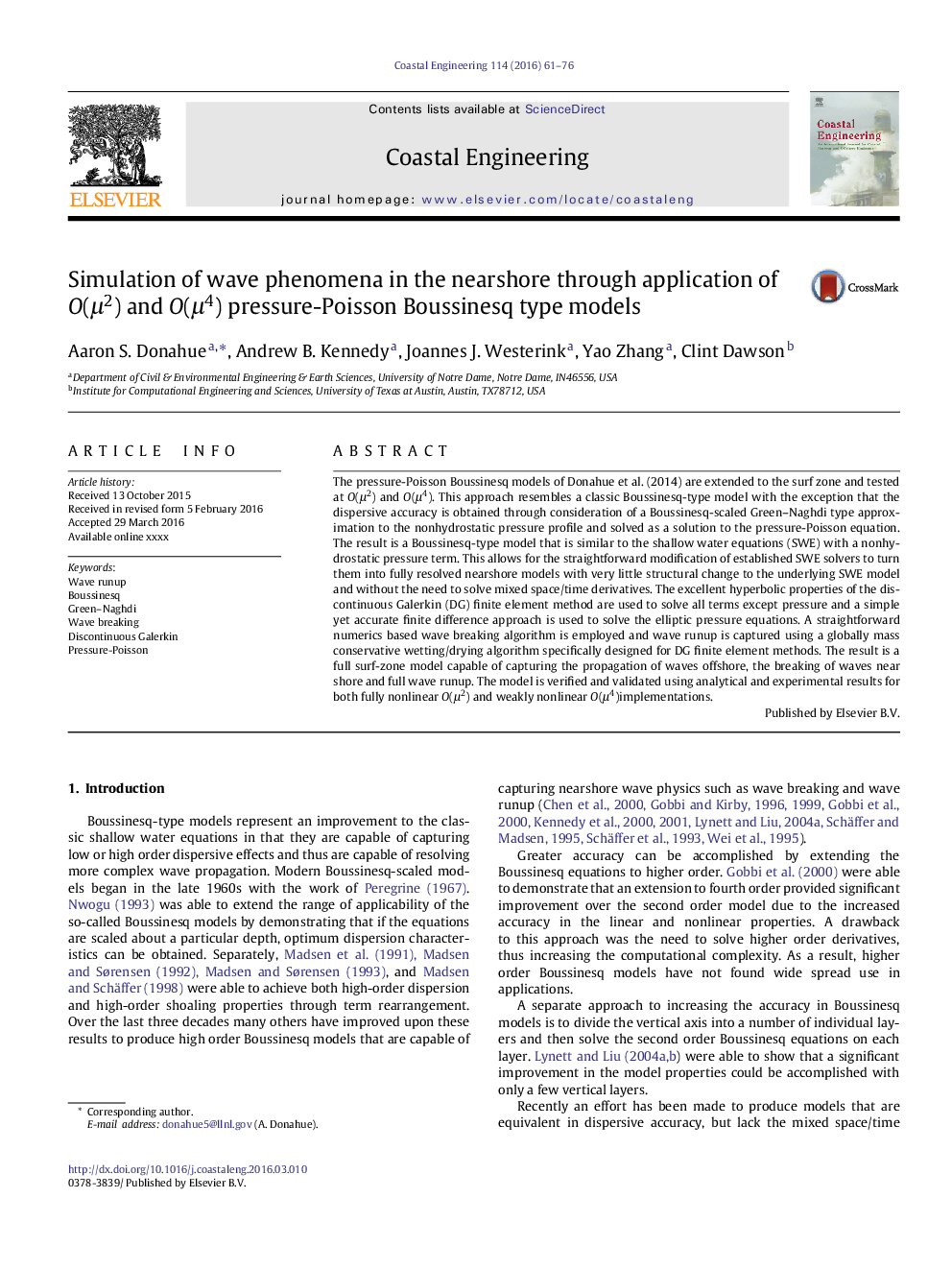| Article ID | Journal | Published Year | Pages | File Type |
|---|---|---|---|---|
| 8059691 | Coastal Engineering | 2016 | 16 Pages |
Abstract
The pressure-Poisson Boussinesq models of Donahue et al. (2014) are extended to the surf zone and tested at O (μ2) and O (μ4). This approach resembles a classic Boussinesq-type model with the exception that the dispersive accuracy is obtained through consideration of a Boussinesq-scaled Green-Naghdi type approximation to the nonhydrostatic pressure profile and solved as a solution to the pressure-Poisson equation. The result is a Boussinesq-type model that is similar to the shallow water equations (SWE) with a nonhydrostatic pressure term. This allows for the straightforward modification of established SWE solvers to turn them into fully resolved nearshore models with very little structural change to the underlying SWE model and without the need to solve mixed space/time derivatives. The excellent hyperbolic properties of the discontinuous Galerkin (DG) finite element method are used to solve all terms except pressure and a simple yet accurate finite difference approach is used to solve the elliptic pressure equations. A straightforward numerics based wave breaking algorithm is employed and wave runup is captured using a globally mass conservative wetting/drying algorithm specifically designed for DG finite element methods. The result is a full surf-zone model capable of capturing the propagation of waves offshore, the breaking of waves near shore and full wave runup. The model is verified and validated using analytical and experimental results for both fully nonlinear O (μ2) and weakly nonlinear O (μ4)implementations.
Related Topics
Physical Sciences and Engineering
Engineering
Ocean Engineering
Authors
Aaron S. Donahue, Andrew B. Kennedy, Joannes J. Westerink, Yao Zhang, Clint Dawson,
